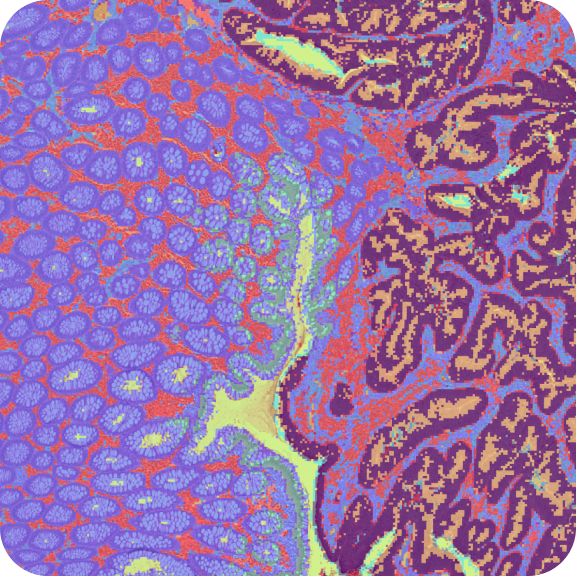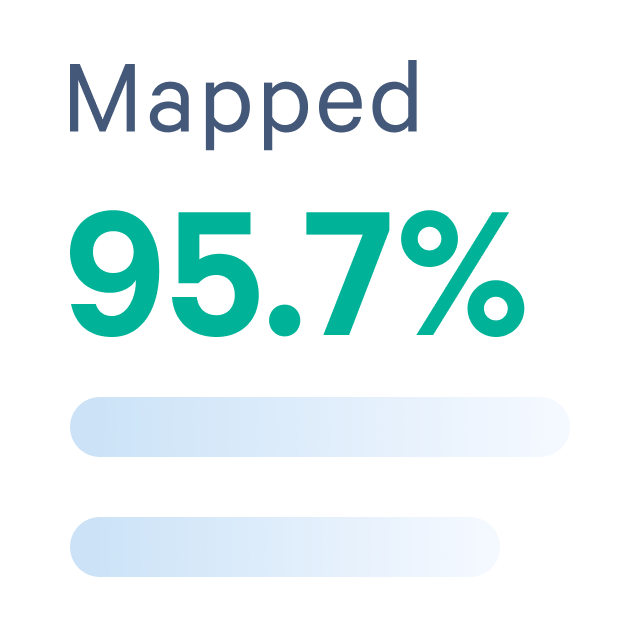Visium CytAssist Gene and Protein Expression Library of Human Tonsil with Add-on Antibodies, H&E, 6.5 mm (FFPE)
CytAssist Spatial Gene and Protein Expression dataset analyzed using Space Ranger 2.1.0

Learn about Visium analysis
Biomaterials
10x Genomics obtained an FFPE Human Tonsil tissue block (male, 25 years old) from Avaden Biosciences.
Tissue preparation
5 µm tissue sections were sectioned and placed onto Superfrost slides as described in Visium CytAssist Spatial Gene and Protein Expression for FFPE – Tissue Preparation Guide (CG000660). Tissue sections were processed following the Demonstrated Protocol Visium CytAssist Spatial Gene and Protein Expression for FFPE – Deparaffinization, H&E Staining, Imaging & Decrosslinking (CG000658).
Imaging followed the Technical Note Visium CytAssist Spatial Gene Expression Imaging Guidelines (CG000521). The H&E image was acquired using an Olympus Slide Scanning Microscope with these settings:
Imaging followed the Technical Note Visium CytAssist Spatial Gene Expression Imaging Guidelines (CG000521). The H&E image was acquired using an Olympus Slide Scanning Microscope with these settings:
- Olympus Objective Magnification: 20X UPLXAPO Objective
- Numerical Aperture: 0.8
- ScopeLED light source: Xcite Novum
- Camera: Hamamatsu Orca FusionBT sCMOS
Library preparation & sequencing
Four custom oligo-conjugated antibodies (ICOS, STING, CD49B, MICA) were obtained from Biolegend and Abcam. To add them to the panel, an antibody titration was used to determine the appropriate concentration for use in the assay, following the Demonstrated Protocol Visium CytAssist Spatial Gene and Protein Expression - Custom Add-on Antibody Optimization (CG000664). The protocol was applied once per antibody, 4x in total. qPCR was performed using the oligos extracted from the immunofluorescence stained sections with the optimum titre. qPCR plots for the four add-on antibodies are provided here (ICOS, STING, CD49B, MICA).
Libraries were prepared following the Visium CytAssist Spatial Gene and Protein Expression Reagent Kits User Guide (CG000494).
- Slide: V43M23-019 (6.5 mm)
- Area: D1
- Sequencing instrument: Illumina NovaSeq
- Targeted sequencing depth (gene expression): 35k reads per spot
- Targeted sequencing depth (protein): 15k reads per spot
- Sequencing configuration: 28 bp read 1 (16 bp Visium spatial barcode, 12 bp UMI), 90 bp read2 (probe insert/antibody barcode), 10 bp i7 sample barcode and 10 bp i5 sample barcode
- Dual-Index sets: SI-TS-D1, SI-NT-D5
Analysis
The resulting FASTQ files and image data were analyzed with Space Ranger v2.1 to produce the output files.
- Number of spots under tissue: 4,908
- Median genes per spot: 8,114
- Mean reads per spot: 75,598
- Mean antibody reads per spot: 34,845
How to view data
To get started, download Loupe Browser to explore the Loupe Browser file, or read more about the other Space Ranger outputs.
This dataset is licensed under the Creative Commons Attribution 4.0 International (CC BY 4.0) license. 10x citation guidelines available here.
